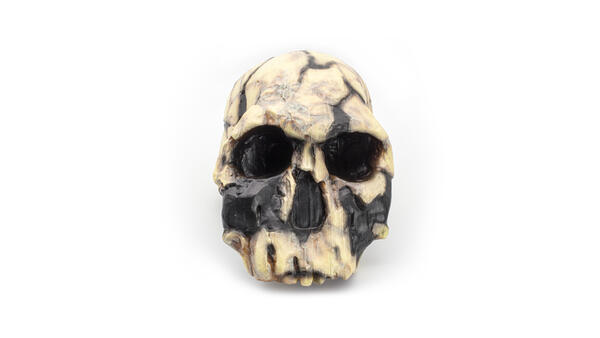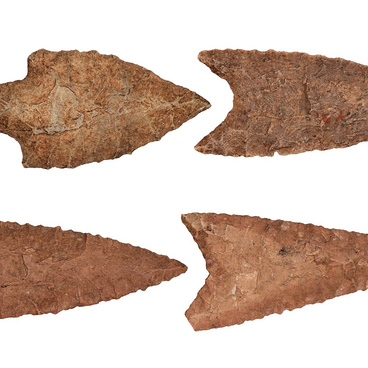A 3D model of the Homo rudolfensis skull is kept in the collection of the regional Museum of Local History.
Homo rudolfensis is an ancestor of modern humans, who lived in East Africa about 2.4–1.9 million years ago. It was more massive than its predecessors and had larger teeth. The height of the Homo rudolfensis ranged from 1.5 to 1.8 meters, and the weight was around 45 to 80 kilograms. It is known that it had a flat face with cheekbones turned forward and a smaller brain volume of about 700 cm3. This is two times smaller than that of modern humans.
For the first time, the skull of a Homo rudolfensis was discovered by Kenyan Bernard Ngeneo in 1972 on the shore of Lake Rudolf (now Turkana) in the Koobi Fora region of Ethiopia. At that time, it was not known to what species the remains belonged. Scientists only managed to determine that it could be dated to two million years old. The skull was named KNM-ER 1470.
Soviet anthropologist and corresponding member of the USSR Academy of Sciences, Valery Alekseev placed the Homo rudolfensis into a separate species and described him in 1978.
Fragments of facial bones and lower jaw, which belonged to the same species, were later found 10 kilometers from the first find. This helped anthropologist Meave Leakey to collect all the finds together and use 3D technology to construct the appearance of the person to whom the remains could belong.
In 1991, archaeologists discovered the second skull of Homo rudolfensis on the shore of Lake Malawi in Africa. All following finds were also discovered in three regions of East Africa: Omo, Koobi Fora and Uraha.
Very little is known about this species today. Researchers do not know exactly when it ceased to exist. There are several versions as to which place Homo rudolfensis occupied in the evolutionary process. Some scientists believe that this species and its predecessors gradually formed Homo erectus — the ancestor of modern humans. Other anthropologists believe that Homo rudolfensis was a representative of a parallel evolutionary line and had nothing in common with the modern species.
Homo rudolfensis is an ancestor of modern humans, who lived in East Africa about 2.4–1.9 million years ago. It was more massive than its predecessors and had larger teeth. The height of the Homo rudolfensis ranged from 1.5 to 1.8 meters, and the weight was around 45 to 80 kilograms. It is known that it had a flat face with cheekbones turned forward and a smaller brain volume of about 700 cm3. This is two times smaller than that of modern humans.
For the first time, the skull of a Homo rudolfensis was discovered by Kenyan Bernard Ngeneo in 1972 on the shore of Lake Rudolf (now Turkana) in the Koobi Fora region of Ethiopia. At that time, it was not known to what species the remains belonged. Scientists only managed to determine that it could be dated to two million years old. The skull was named KNM-ER 1470.
Soviet anthropologist and corresponding member of the USSR Academy of Sciences, Valery Alekseev placed the Homo rudolfensis into a separate species and described him in 1978.
Fragments of facial bones and lower jaw, which belonged to the same species, were later found 10 kilometers from the first find. This helped anthropologist Meave Leakey to collect all the finds together and use 3D technology to construct the appearance of the person to whom the remains could belong.
In 1991, archaeologists discovered the second skull of Homo rudolfensis on the shore of Lake Malawi in Africa. All following finds were also discovered in three regions of East Africa: Omo, Koobi Fora and Uraha.
Very little is known about this species today. Researchers do not know exactly when it ceased to exist. There are several versions as to which place Homo rudolfensis occupied in the evolutionary process. Some scientists believe that this species and its predecessors gradually formed Homo erectus — the ancestor of modern humans. Other anthropologists believe that Homo rudolfensis was a representative of a parallel evolutionary line and had nothing in common with the modern species.


